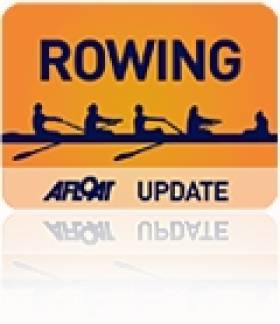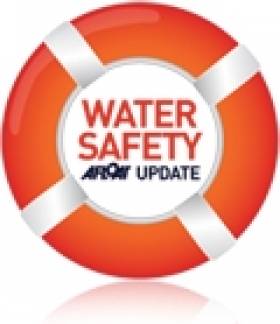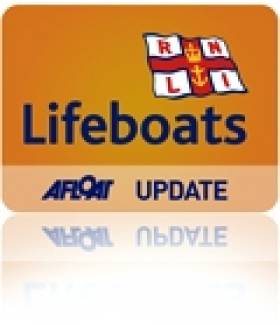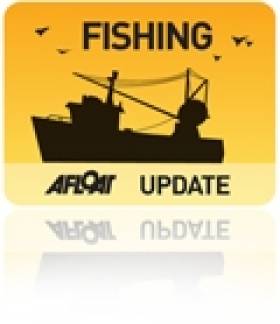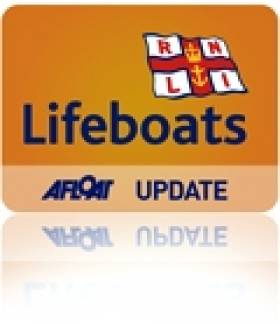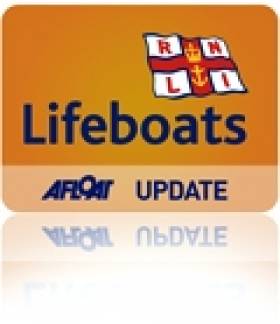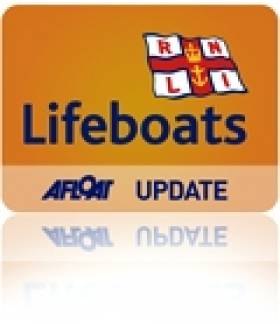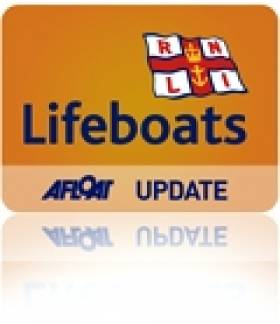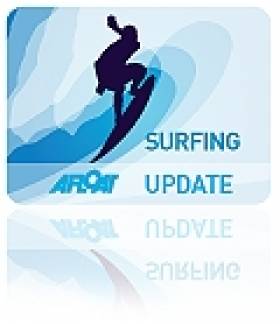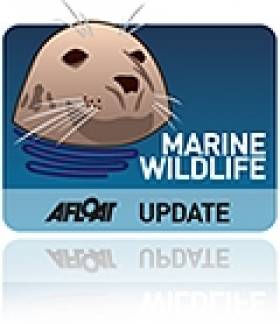Displaying items by tag: Tramore
Tramore RNLI To Name New Lifeboat Next Weekend
#RNLI - The new Tramore RNLI D-class lifeboat D-781 will be officially named the Isabella Purchase during a ceremony at the National Lifeguard Training Centre in Tramore on Saturday 12 September at 3pm.
The lifeboat will be named during a short ceremony and service of dedication by Mrs Sally Mongey, wife of the late Finn Mongey. Finn was the lifeboat operations manager for Tramore RNLI Lifeboat Station from when it re-opened in 1964 until his retirement in 1984.
The lifeboat is being named in honour of Mrs Ivy Purchase, known as Isabella, who died in September 2012, leaving her estate to the RNLI to provide a lifeboat in her name. Isabella lived in Midhurst, West Sussex and was a long-time supporter of the charity.
This new lifeboat replaces the Trá Mhór, which was placed on service on 30 June 2005 and launched 127 times, rescuing 100 people over its lifetime.
Tramore RNLI lifeboat operations manager Derek Musgrave, who will be accepting the lifeboat on behalf of the Waterford lifeboat station, said: "On behalf of all the volunteers with Tramore RNLI I would like to express our sincere gratitude to the late Mrs Purchase for her generous and life-saving gift.
"This lifeboat is the vessel that will carry our volunteer lifeboat crew out to sea to save lives and onboard it, our volunteer lifeboat crew will learn and develop their skills through extensive training.
"We look forward to welcoming the people of Tramore, who have been so generous in their support to the RNLI and our lifeboat station, to show them the newest edition to the life-saving fleet in Ireland."
The D-class lifeboat is built at a cost of €62,000 and has been the workhouse of the charity for nearly 50 years. It is inflatable, robust and highly manoeuvrable, capable of operating much closer to the shore than the all-weather lifeboats.
It is especially suited to surf, shallow water and confined locations, often close to cliffs, among rocks or even caves. It measures five metres in length and can carry three crewmembers onboard. It has an endurance of three hours at sea, at its maximum speed of 25 knots.
All are welcome to attend the naming ceremony and service of dedication. Please note that the Totem Pole car park located at the end of the Lower Promenade along the seafront will be closed to facilitate the ceremony from 9am to 5pm on the day. An alternative car park located adjacent to this will remain open to the public and can be accessed by Estuary Road. Alternative parking will also be available along the Main Promenade.
National Lifeguard Training Centre Opens In Tramore
#WaterSafety - Tomorrow (Monday 9 March) sees the opening of the new National Lifeguard Training Centre in Tramore, Co Waterford, as The Irish Times reports.
The €500,000 inter-agency initiative will have a focus on training people for the growing discipline of surf lifesaving both around Ireland and abroad.
But the three-storey facility on Tramore's Lower Promenade has practical water safety implications for beachgoers over the summer months, as the town's duty lifeguards will have a panoramic view of the strand and shore from the observation deck.
The Irish Times has more on the story HERE.
Teamwork Helps Tramore Lifeboat Bring Bull To Safety
#RNLI - Tramore RNLI's volunteers were involved in a rescue operation with a difference recently when they worked alongside Tramore Coast Guard and Waterford Animal Welfare to bring a stranded bull to safety after he had fallen from a cliff and taken refuge on a rocky ledge.
The drama unfolded after 5pm on Sunday evening (16 November) when local gardaí contacted Tramore RNLI to inform them that a bull had fallen from a cliff near well known local landmark, the Metal Man, and had swam to a rocky ledge near Newton Cove a few hundred metres away.
Tramore RNLI were joined by the local coastguard unit on shore and Wateford Animal Welfare were contacted for their advice.
The RNLI and coastguard crews tried to approach the bull but his position was hard to access in fading light and rising tides and it was deemed by all present that it was too difficult to carry out a rescue at that time. It was decided to wait until the following morning before trying again.
At first light the next morning, Tramore Coast Guard contacted the Tramore RNLI lifeboat crew and, along with Andrew Quinn from Waterford Animal Welfare, they were on scene in minutes with a plan to bring the bull to safety.
A rope was secured to the animal by a member of the coastguard team and passed to the lifeboat. The oars of the lifeboat were used to gently usher the bull down off his rocky ledge and into the water. Once there, he started swimming and came alongside the lifeboat before being guided by the crew and Andrew into a nearby cove.
Conditions at the time were calm, and the bull was able to exit the water unaided to be met with his owner.
Commenting on the unusual callout, Tramore RNLI helm Dave O’Hanlon said: "We have a bit of a history here in Tramore RNLI with animals. Over the last few years we have gone out to a calf, a whale, a dolphin and a group of puppies.
"We are pleased that the animal was not too distressed by the ordeal and that working with our colleagues in the other services we were able to render assistance and bring about a happy outcome.
"Our thoughts were to try help the poor animal but also to prevent anyone trying to carry out a rescue themselves without the correct advice or equipment. Bulls are very strong and could easily cause an injury. I was also surprised to learn they are good swimmers too!"
Illegal Bass Netting Prompts Multi-Agency Operation Near Tramore
#Fishing - A duo caught illegally fishing for bass off Tramore put themselves in "extreme danger" by going to sea in an unseaworthy boat.
Staff of Inland Fisheries Ireland (IFI) were working with the Garda investigating illegal netting of fish near Saleens in Co Waterford around 5am on Sunday morning last (25 August) when they came upon the tiny craft, which was not capable of dealing with the sea conditions, and had only one buoyancy aid for its two occupants.
IFI fisheries officers and gardaí were left with no choice but to alert the RNLI and Irish Coast Guard when what began as a fisheries investigation turned into a multi-agency marine search operation.
Thankfully the two people from the tiny craft were later found safely ashore. IFI subsequently seized the small craft and a 120m drift net, along with nine dead bass.
In a statement, IFI emphasised that fishing for bass is illegal, and that such activity has the potential to do huge damage to stocks.
The sale of wild Irish bass is also illegal, and it is important that the public does not support illegal fishing by buying such fish.
A file is being prepared by IFI with a view to prosecuting the fisheries offence.
IFI director David McInerney said it is incredible the risks that are undertaken by people undertaking water based activities.
The area in question is famous for having great stocks of bass and sea trout, but sadly has been the location for a number of tragic drowning’s in recent years.
Three Anglers Rescued After Boat Capsizes off Waterford coast
#rnli – Lifeboat crew with Tramore RNLI responded to a callout this afternoon at 1.43pm when a six metre half decker boat capsized with four men onboard halfway between Brownstown Head and Rhinashark off the Waterford coast. One man managed to swim to shore and the remaining three were recovered by the Tramore RNLI inshore lifeboat crew. One of the three was airlifted off the lifeboat by the Coast Guard helicopter Rescue 117 to be taken to hospital.
It is believed the men were in the water for up to a half an hour before they were rescued. There was a moderate swell in the area at the time.
Commenting on the callout Tramore RNLI Lifeboat Operations Manager Derek Musgrave said, "I am relieved that all four men are safe after their boat capsized. They were wearing lifejackets which provided the necessary buoyancy to keep them afloat while they clung to the upturned vessel.
Tramore RNLI Lifeboat Recover Three men from Homemade Raft
#rnli – Lifeboat crew with Tramore RNLI were called out this weekend when a member of the public raised the alarm after seeing three men out at sea on a homemade raft without lifejackets. On arriving at the scene with the Irish Coast Guard helicopter Rescue 117, the lifeboat crew managed to convince the three men to return to shore on the lifeboat for their safety.
The call for assistance came at 6.40pm on Friday evening with the initial location of the men incorrect. Using local knowledge the lifeboat crew located the men at Kilfaraissey beach and were then joined on scene by Rescue 117. The men who were 600 metres offshore insisted that they were not in need of help and the lifeboat stood by.
Following a discussion with Rescue 115 a decision was made that due to the unsafe structure of the raft and with no lifejackets being worn that the men would have to return to shore with the lifeboat crew. The three men agreed to return onboard the lifeboat and they were taken onboard and brought back to the beach. They were met on their return by members of An Garda Siochana.
Commenting on the callout Tramore RNLI crewmember Paul Tuohy said, "This could have so easily ended in tragedy. The men were a good distance out from the shore and between two islands where there is a racing tide that changes rapidly. The raft was very poorly constructed and the men were unprepared for any change in their circumstances. The raft could have broken up or they could have been thrown from it and with no lifejackets they would have found themselves in trouble very quickly. With the recent drownings we would appeal to everyone to take care in the water and to wear and use the proper equipment including a lifejacket.
#rnli – RNLI lifeboat crews from Dunmore East and Tramore were launched this evening (Wednesday 12 June) to search for three men who were reported overdue when their small fishing punt failed to return. Dunmore East RNLI and the Coast Guard helicopter Rescue 117 recovered the three men from the water in Tramore Bay who were later pronounced dead.
Both lifeboats were launched at approximately 5.45pm when a local fisherman reported the three men overdue. They were also joined by Rescue 117. The three men had been out in their 18 foot punt to fish and were headed to Brownstown Head between Tramore Bay and Dunmore East.
Rescue 117 recovered the first casualty from the water a few minutes later with the remaining two men recovered by the Dunmore East lifeboat crew. The punt was submerged in the water with only a small part of it visible. The lifeboat proceeded back to Dunmore East harbour where a doctor pronounced the men dead.
Speaking on the tragedy Dunmore East RNLI Coxswain Michael Griffin said, "This is a devastating loss for the community. I knew the men personally and had been at school with two of them. They were well known and respected by everyone. I wish to offer my condolences and those of Dunmore East and Tramore RNLI to their family. Sadly we have seen our fair share of tragedy in this area and it is heartbreaking to be unable to bring them home safely."
Lifeboat Frees Whale Tangled in Lobster Pot
Lifeboat crew at Tramore RNLI were called out this morning to help assist a whale which had become tangled up in lobster pots. Working alongside an inshore fishing vessel, the two crews worked together to free the mammal.
The lifeboat was launched with around 11.30am after a local fishing vessel reported what they believed to be a whale caught up in lobster pots a quarter of a mile out from shore. When the lifeboat arrived on scene they had to wait some minutes for the creature to surface.
On closer inspection it was discovered that the rope holding some lobster pots together had become snagged in the mammal's mouth and it was turning around in the water repeatedly, attempting to free itself.
The lifeboat worked alongside the inshore fishing vessel, which had an onboard winch, to try and cut the rope free from the mammal's mouth. At first the lifeboat crew tried to take hold of the rope but they were being dragged by the mammal. This continued when they passed the rope onto the larger fishing vessel.
It was then the mammal was hoisted onto the winch of the inshore fishing vessel and the rope was cut free. The lobster pots where then hauled onboard and the mammal on becoming free from the pots calmly swam out to sea.
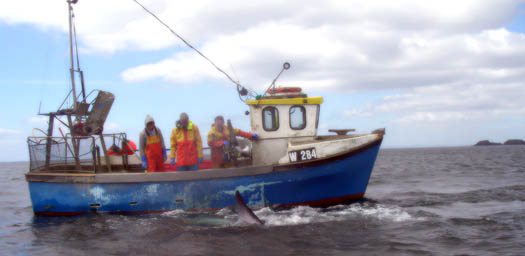
Commenting on the callout Tramore RNLI crewmember Tom McConnell said, "This was a huge creature. We had to be extremely cautious and work carefully with the other vessel to free it. We felt that one wrong move and we could be flipped over in our inshore lifeboat. We had asked our colleagues in Dunmore East RNLI to be on standby with their all weather lifeboat but thankfully the whale was freed and able to return the deeper waters."
Learn To Surf - Through Irish!
#Surfing - Fancy learning to surf as Gaeilge? One surf school in the sunny southeast is giving international visitors the opportunity to do just that.
The Freedom Surf School in Tramore, Co Waterford offers 'Ireland's only accredited surfing certificate course through the Irish language'.
And in time for The Gathering initiative, this summer the school is running a series of surf camps for developing oral skills through actively learning the language.
These five-day camps involve classroom tuition in the mornings, while the afternoons will be spent surfing trí Ghaeilge - all led by qualified Irish teachers and surf instructors.
For more details visit the Freedom Surf School website HERE.
Four Decapitated Seals In Tramore Add To Disturbing Total
#MarineWildlife - The Irish Seal Sanctuary is calling for immediate action by the National Parks and Wildlife Service (NPWS) after the discovery of four more seal carcasses in Tramore on Friday 21 December.
The four decapitated marine mammals reported by the Irish Examiner add to the eight found dead in Wexford and Waterford over recent days, bringing to 12 the total for the week.
Irish Seal Sanctuary spokesperson Johnny Woodlock told the Examiner: "It's an evolving situation down there. Only last night, I heard there were a few dead porpoises washed in. They are also a protected species.
Woodlock said yesterday (22 December) that he was still awaiting photographs in order to confirm the number of dead seals.
The disturbing turn of events echoes the reported "swing of activity" in seal fatalities around Ireland earlier in the year - the most horrific of these being the shocking scene of two baby seal heads nailed to a sign outside the Dingle Wildlife and Seal Sanctuary in June.


























